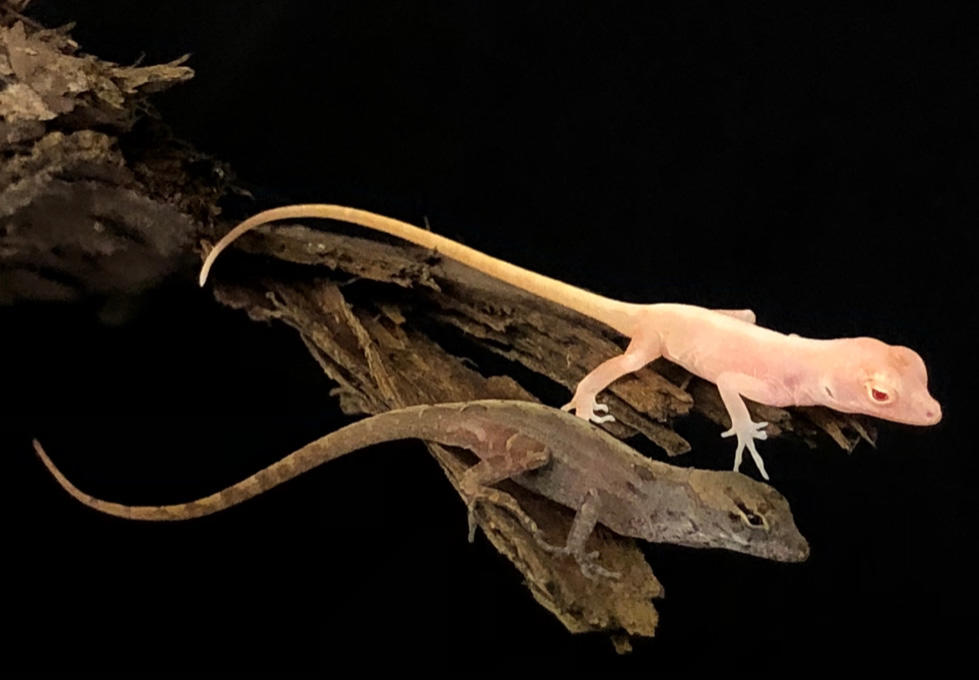Section Branding
Header Content
Geneticists At UGA Are First In Editing Lizard Genes
Primary Content
Geneticists at the University of Georgia have accomplished the first ever editing of the genes of a lizard with the gene editing tool CRISPR.
The scientists weren’t shocked that the process worked, but they were surprised at the extent to which it was effective. That’s because the technique they were pursuing was a kind of work around for a peculiarity of reptile reproduction.
Geneticists At UGA Are First In Editing Lizard Genes
In mammals and even amphibians, CRISPR is best used in the window between an egg getting fertilized and the exponential growth that comes with cell division. But in reptiles like the brown anole lizard the UGA scientists used in the lab, it can be really hard to know when fertilization even happens. Ovulation is hard to see, and when it does happen the egg could be fertilized by sperm sexually active female lizards can keep stored in their bodies.
So geneticists settled on a strategy of using the CRISPR chemical reagent on lizard eggs before they were ovulated. They felt sure they would end up with a lizard with one gene for the trait for albinism. Since that’s a recessive trait, they planned on repeating the process to breed another similar lizard which they would breed with the first before seeing their first albino. Remember your high school biology: recessive traits must be inherited from mother and father.
Here’s the unexpected bit. UGA geneticist Doug Menke says the team managed to edit a gene for albinism in the father’s sperm, too, without even trying.
"These gene editing tools are very stable,” Menke said. So stable in fact that they hung around in the mother lizard after doing the job of editing her egg.
“So the CRISPR gene editing reagents were also able to edit the father’s copy [of the gene].” Menke said.
With two copies of the gene, the team was shocked to find a pale, albino hatchling in the first generation of the experiment rather than an animal they would have to breed with another mutant. Menke said the result takes away a lot of the guess work in using CRISPR with reptiles.
So why lizards and why albinism? Menke said when they are albinos, both lizards and people have eyes without a structure called the macula. The macula is crucial for sharp, detailed vision. Mice, the usual lab animal, are nocturnal, and don’t have macula.
Menke said by learning to manipulate genes for albinism lizards, we might one day have a gene therapy for people who albinism related blindness.
Menke said another possible use of dependable CRISPR gene editing in reptiles would be engineering infertility into populations of invasive reptiles like the Burmese pythons population rapidly expanding in the Florida Everglades.


